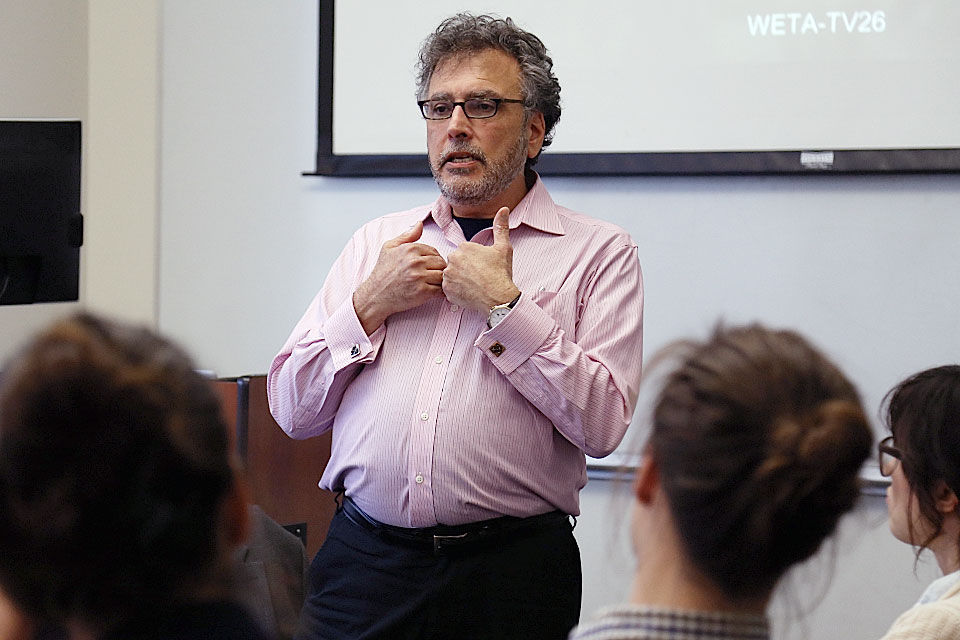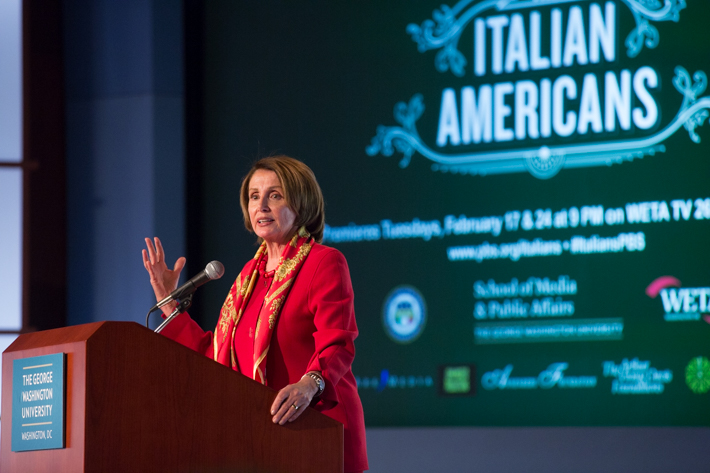By Ruth Steinhardt
With the success of true crime series like HBO’s “The Jinx,” documentary filmmaking has become a topic of general interest. On Tuesday night, students at the George Washington University got an overview of the subject directly from the source as filmmaker and producer Jeff Bieber held a workshop called “Building Buzz: How to Engage the Public” in partnership with the School of Media and Public Affairs.
In a spirited back-and-forth conversation that was more round table than lecture, Mr. Bieber, vice president of content development and production at public broadcaster WETA and creator of documentary series “Italian Americans” and the Peabody-winning “Latino Americans,” gave a comprehensive account of what goes into creating and funding a documentary and capturing an audience.
The event was the result of a partnership between WETA and SMPA that saw Nancy Pelosi attending a screening of "Italian Americans" on GW's campus earlier this spring.
Mr. Bieber said that the form has evolved since his entry into the field in the early 1980s.
“It used to be that television was king and everything else was ‘outreach,’” he said. Television documentarians considered the program itself to be the center of their work, to which elements like educational materials and books were secondary, and funding was based on the perceived impact of the show itself.
Now, he said, television is perceived to be a “very passive medium.” Mr. Bieber and his counterparts must instead create “initiatives,” comprehensive awareness-raising programs—including books, school curricula, social media campaigns and affinity group partnerships—of which the documentary itself is only a part.
“We need to be able to deliver content and to measure the impact of that content,” he said. “That change was driven by the market, but also by technology.”
To raise funds, documentary filmmakers must be able to convince both corporate and non-corporate sponsors that supporting their work will have a mutually beneficial impact. The strategies for each type of fundraising differ considerably. Applying for a funding grant from the National Endowment for the Humanities, for instance, required Mr. Bieber and his production team to assemble a heavy book of materials nailing down “the human themes” driving the documentary.
They didn’t look at it as presenting the film itself, he said. “Instead, we presented ‘What are the challenges we’re facing as Americans, and how do we meet those challenges?’”
In contrast, applying for funding from corporate sources required a slick brochure laying out the benefits to the partner company. “With them, it’s very simple,” Mr. Bieber said. “We just tell them ‘Here’s what you’ll get for your money.’”
The class also watched illustrative excerpts from Mr. Bieber’s programs “Italian Americans” and “Latino Americans.” Though the latter was a critical darling, it was less commercially successful than “Italian Americans,” Mr. Bieber said. He and the audience, which was composed principally of students from Professor Nina Seavey’s certificate program in documentary filmmaking but included other students from SMPA and the GW School of Business, discussed the reasons this might be true, including narrowness of the target audience and the relative ratios of heartwarming to challenging material.
Wherever the evolution of the form takes him, Mr. Bieber said that documentaries were undoubtedly his métier.
“It’s awe-inspiring to follow somebody, to tell somebody’s story,” he said.



